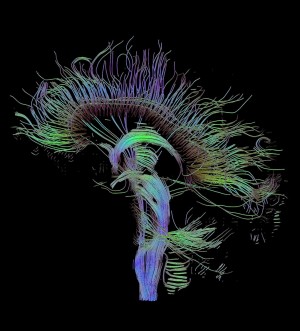Neuroscience and Information Overload
by SebInformation overload now seems to be an inescapable reality, no matter what your role or expertise. With that in mind, it is worth looking at how information overload has impacted one particular sector and the innovative solution.
Over the last couple of decades there has been an explosion of neuroscience research. There are now estimated to be around two million published neuroscience research papers, far more than any scientist could read in a lifetime.
The problems that have arisen from information overload include:
- Missing important existing discoveries that would be relevant for current projects
- Duplicating published research and experiments
- Failing to apply planning and logic to research due to not being able to see the full picture
The western world invests large amounts of money in scientific research, and we need to know that that research is well-planned, productive and relevant. Without creating some sort of order amongst the vast numbers of research papers available, it’s difficult for neuroscientists to comply with these requirements.
The Solution for Neuroscience Information Overload
To combat this problem and bring order to the mess, a team at the University of California, Los Angeles (UCLA) created research maps that are accessible through an online app. They aim to provide simple and unbiased details of all published research papers in the neurosciences available. These research maps will allow neuroscientists to gain an overview of the research that has already been conducted, understand what is already known, identify crucial gaps in our knowledge and plan their next projects.
Addressing these maps, principal investigator Alcino Silva, a professor of neurobiology at the David Geffen School of Medicine at UCLA, suggests that "Without a way to organize the literature, we risk missing key discoveries and duplicating earlier experiments. Research maps will enable neuroscientists to quickly clarify what ground has already been covered and to fully grasp its meaning for future studies."
The research maps are categorised by specialised fields, and the papers within these are linked, allowing scientists to focus on particular areas of expertise. The evidence within the research is also scored according to key criteria such as reproducibility and convergence, which is when different experiments point to a single conclusion.
The maps are interactive and searchable, so scientists can view as much or as little as they need to. There is the ability to zoom in on certain areas of research so they have the option of seeing a high level summary of findings, detailed results of individual experiments and nearly anything in between. The maps will provide the levels of detail scientists need to make informed decisions about their future work.
Populating the Tool
The challenge is now to populate the maps fully ensuring that all published research papers are included. The team at UCLA began with their own field of expertise, molecular and cellular cognition, to test the map, and now they are expanding it across all the neurosciences. It relies on a crowd sourcing principle, where scientists who are specialists in their fields add the research papers that they find useful.
The expectation going forward is that the addition of new research papers to the maps will become routine. The team is setting up a system whereby upon being published a neuroscience research paper will automatically populate the research map, allowing other neuroscientists instant access to the latest findings.
The team at UCLA believes that research maps will improve the planning and co-ordination of neuroscience research, allowing scientists to gain an overall picture of the research that has been completed. This type of map could be a model for other niche sectors looking for ways to make sense of the masses of information they are now confronted with.
Where do you see the future of information mapping?
Image credit: Author: Thomas Schultz; retrieved on 6 May 2014 from http://upload.wikimedia.org/wikipedia/commons/8/82/DTI-sagittal-fibers.jpg; no modifications made






